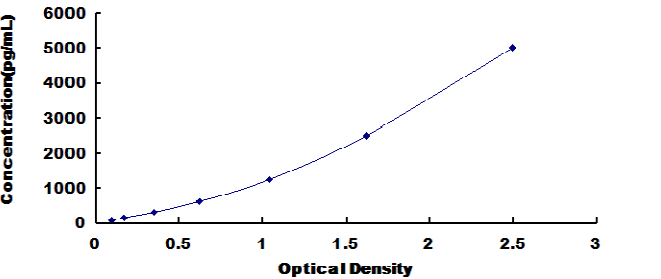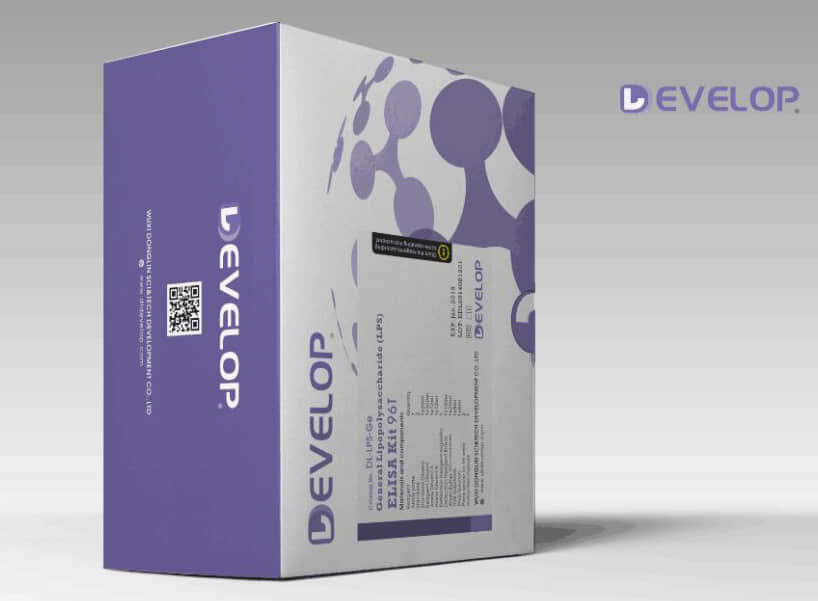Human Proteasome 26S Subunit, Non ATPase 4 (PSMD4) ELISA Kit


two product lines: Traditional ELISA Kit and Ready-to-Use ELISA Kit.


1.Overview:
Other names:Multiubiquitin chain-binding protein; Antisecretory factor 1(AF;ASF); 26S proteasome regulatory subunit RPN10; 26S proteasome regulatory subunit S5A
Function: Component of the 26S proteasome, a multiprotein complex involved in the ATP-dependent degradation of ubiquitinated proteins. This complex plays a key role in the maintenance of protein homeostasis by removing misfolded or damaged proteins, which could impair cellular functions, and by removing proteins whose functions are no longer required. Therefore, the proteasome participates in numerous cellular processes, including cell cycle progression, apoptosis, or DNA damage repair. PSMD4 acts as an ubiquitin receptor subunit through ubiquitin-interacting motifs and selects ubiquitin-conjugates for destruction. Displays a preferred selectivity for longer polyubiquitin chains.
Sequence:
10 20 30 40 50 MVLESTMVCV DNSEYMRNGD FLPTRLQAQQ DAVNIVCHSK TRSNPENNVG 60 70 80 90 100 LITLANDCEV LTTLTPDTGR ILSKLHTVQP KGKITFCTGI RVAHLALKHR 110 120 130 140 150 QGKNHKMRII AFVGSPVEDN EKDLVKLAKR LKKEKVNVDI INFGEEEVNT 160 170 180 190 200 EKLTAFVNTL NGKDGTGSHL VTVPPGPSLA DALISSPILA GEGGAMLGLG 210 220 230 240 250 ASDFEFGVDP SADPELALAL RVSMEEQRQR QEEEARRAAA ASAAEAGIAT 260 270 280 290 300 TGTEDSDDAL LKMTISQQEF GRTGLPDLSS MTEEEQIAYA MQMSLQGAEF 310 320 330 340 350 GQAESADIDA SSAMDTSEPA KEEDDYDVMQ DPEFLQSVLE NLPGVDPNNE 360 370 AIRNAMGSLA SQATKDGKKD KKEEDKK
INTENDED USE
The kit is a sandwich enzyme immunoassay for the in vitro quantitative measurement of PSMD4 in human serum, plasma, tissue homogenates or other biological fluids.
DETECTION RANGE
78-5000pg/ml. The standard curve concentrations used for the ELISA’s were 5000pg/ml, 2500pg/ml, 1250pg/ml, 625pg/ml, 312pg/ml, 156pg/ml, 78.1pg/ml.
SENSITIVITY
The minimum detectable dose of PSMD4 is typically less than 29.8pg/mL.
The sensitivity of this assay, or Lower Limit of Detection (LLD) was defined as the lowest protein concentration that could be differentiated from zero. It was determined by adding two standard deviations to the mean optical density value of twenty zero standard replicates and calculating the corresponding concentration.
SPECIFICITY
This assay has high sensitivity and excellent specificity for detection of PSMD4.
No significant cross-reactivity or interference between PSMD4 and analogues was observed.
You can reference link of the kit as following
https://dldevelop.com/Research-reagent/dl-psmd4-hu.html
https://www.dldevelop.com/uploadfile/data/DL-PSMD4-Hu.pdf
Introduction
| Item | Standard | Test | |
| Description |
The kit is a sandwich enzyme immunoassay for the in vitro quantitative measurement of the index in serum, plasma, tissue homogenates, cell lysates, cell culture supernates and other biological fluids. |
Conform | |
| Identification | Colorimetric | Positive | |
| Composition | Traditional ELISA Kit | Ready-to-Use ELISA KIT | Conform |
| Pre-coated, ready to use 96-well strip plate 1 | Pre-coated, ready to use 96-well strip plate 1 | ||
| Plate sealer for 96 wells 2 | Plate sealer for 96 wells 2 | ||
| Standard 2 | Standard 2 | ||
| Diluents buffer 1×45mL | Standard Diluent 1×20mL | ||
| Detection Reagent A 1×120μL | Detection Solution A 1×12mL | ||
| Detection Reagent B 1×120μL | Detection Solution B 1×12mL | ||
| TMB Substrate 1×9mL | TMB Substrate 1×9mL | ||
| Stop Solution 1×6mL | Stop Solution 1×6mL | ||
| Wash Buffer (30 × concentrate) 1×20mL | Wash Buffer (30 × concentrate) 1×20mL | ||
| Instruction manual 1 | Instruction manual 1 | ||
Test principle
The microtiter plate provided in this kit has been pre-coated with an antibody specific to the index. Standards or samples are then added to the appropriate microtiter plate wells with a biotin-conjugated antibody preparation specific to the index. Next, Avidin conjugated to Horseradish Peroxidase (HRP) is added to each microplate well and incubated. After TMB substrate solution is added, only those wells that contain the index, biotin-conjugated antibody and enzyme-conjugated Avidin will exhibit a change in color. The enzyme-substrate reaction is terminated by the addition of sulphuric acid solution and the color change is measured spectrophotometrically at a wavelength of 450nm ± 10nm. The concentration of the index in the samples is then determined by comparing the O.D. of the samples to the standard curve.
Recovery
Matrices listed below were spiked with certain level of recombinant PSMD4 and the recovery rates were calculated by comparing the measured value to the expected amount of the index in samples.
| Matrix | Recovery range (%) | Average(%) |
| serum(n=5) | 81-93 | 86 |
| EDTA plasma(n=5) | 80-97 | 88 |
| heparin plasma(n=5) | 90-101 | 95 |
Linearity
The linearity of the kit was assayed by testing samples spiked with appropriate concentration of the index and their serial dilutions. The results were demonstrated by the percentage of calculated concentration to the expected.
| Sample | 1:2 | 1:4 | 1:8 | 1:16 |
| serum(n=5) | 82-96% | 83-98% | 81-99% | 93-101% |
| EDTA plasma(n=5) | 88-101% | 86-95% | 90-102% | 80-93% |
| heparin plasma(n=5) | 80-91% | 82-90% | 95-104% | 79-95% |
Precision
Intra-assay Precision (Precision within an assay): 3 samples with low, middle and high level the index were tested 20 times on one plate, respectively.
Inter-assay Precision (Precision between assays): 3 samples with low, middle and high level the index were tested on 3 different plates, 8 replicates in each plate.
CV(%) = SD/meanX100
Intra-Assay: CV<10%
Inter-Assay: CV<12%
Stability
The stability of ELISA kit is determined by the loss rate of activity. The loss rate of this kit is less than 5% within the expiration date under appropriate storage conditions.
Note:
To minimize unnecessary influences on the performance, operation procedures and lab conditions, especially room temperature, air humidity and incubator temperatures should be strictly regulated. It is also strongly suggested that the whole assay is performed by the same experimenter from the beginning to the end.
Assay procedure summary
1. Prepare all reagents, samples and standards;
2. Add 100µL standard or sample to each well. Incubate 2 hours at 37℃;
3. Aspirate and add 100µL prepared Detection Reagent A. Incubate 1 hour at 37℃;
4. Aspirate and wash 3 times;
5. Add 100µL prepared Detection Reagent B. Incubate 1 hour at 37℃;
6. Aspirate and wash 5 times;
7. Add 90µL Substrate Solution. Incubate 15-25 minutes at 37℃;
8. Add 50µL Stop Solution. Read at 450nm immediately.
Order or get a Quote
We will reply you within 24 hours!














